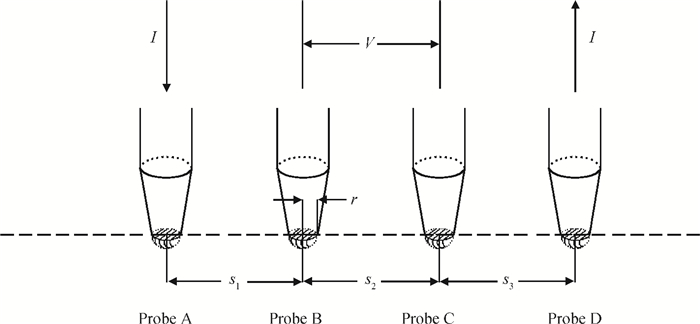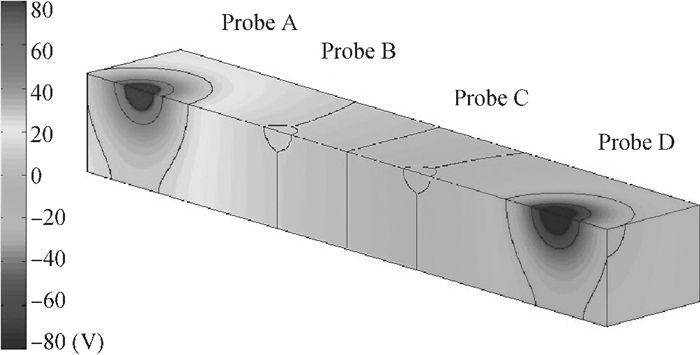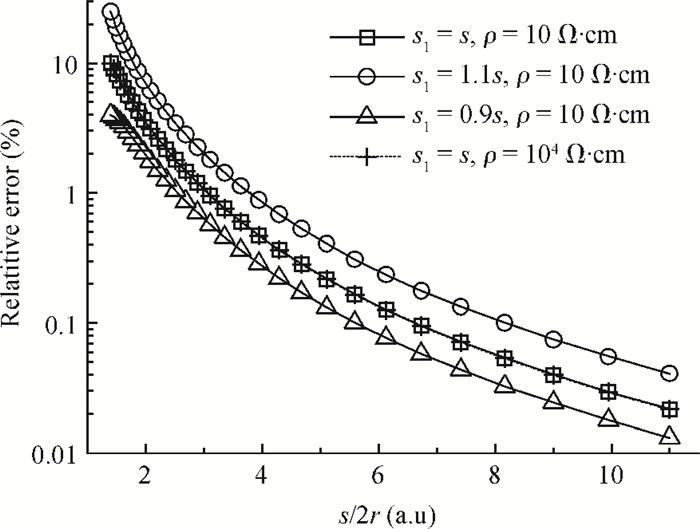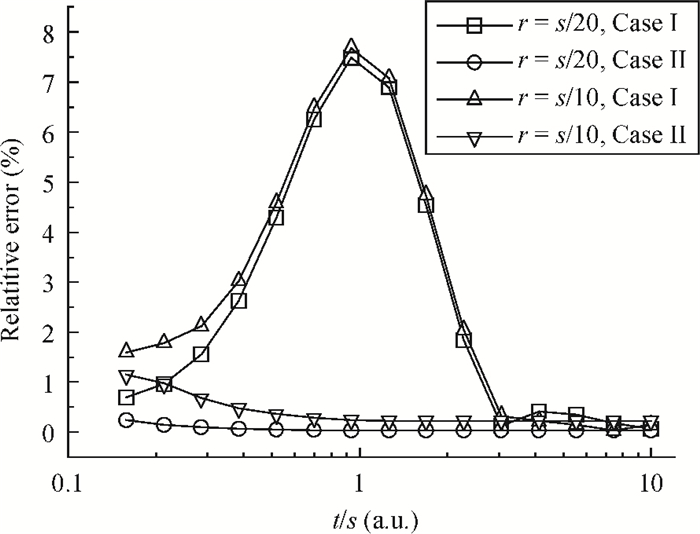| Citation: |
Kai He, Yang Li, Xing Chen, Jianxin Wang, Qinyao Zhang. Influence of finite size probes on the measurement of electrical resistivity using the four-probe technique[J]. Journal of Semiconductors, 2014, 35(8): 082003. doi: 10.1088/1674-4926/35/8/082003
****
K He, Y Li, X Chen, J X Wang, Q Y Zhang. Influence of finite size probes on the measurement of electrical resistivity using the four-probe technique[J]. J. Semicond., 2014, 35(8): 082003. doi: 10.1088/1674-4926/35/8/082003.
|
Influence of finite size probes on the measurement of electrical resistivity using the four-probe technique
DOI: 10.1088/1674-4926/35/8/082003
More Information
-
Abstract
The four-probe technique is widely used in the characterization of electrical properties of solids and thin films. To investigate the influence of finite size probes with non-planar contact on the standard four-probe method, we have proposed an image method to simulate the potential distribution within the specimen. The numerical results show that for infinitely thick samples, the standard method can only provide accurate determination of resistivity (relative error below 1%) when the ratio of the average inter-electrode spacing to the diameter of the probe is greater than 3. We have also found that disregarding the probe size brings a less dominate error than that introduced by the approximate formula, when the sample's thickness is close to the inter-electrode spacing. -
References
[1] Liu Xinfu, Sun Yicai, Liu Dongsheng, et al. Research on instrument for testing sheet resistance without testing pattern and the orientation of probes. Chinese Journal of Semiconductors, 2004, 25(2):221 http://en.cnki.com.cn/Article_en/CJFDTOTAL-BDTX200402018.htm[2] Cheng Shuying, Huang Cichang, Chen Yanqing, et al. Investigation on preparation of SnS film and its properties. Chinese Journal of Semiconductors, 2005, 26(6):1173 https://www.researchgate.net/publication/289918989_Investigation_on_preparation_of_SnS_film_and_its_properties[3] Valdes L B. Resistivity measurements on germanium for transistors. Proceedings of the IRE, 1954, 42(2):420 doi: 10.1109/JRPROC.1954.274680[4] Guise O, Marbach H, Yates J T, et al. Development and performance of the nanoworkbench:a four tip STM for conductivity measurements down to submicrometer scales. Review of Scientific Instruments, 2005, 76:045107 doi: 10.1063/1.1878213[5] Li J C, Wang Y, Ba D C. Characterization of semiconductor surface conductivity by using microscopic four-point probe technique. Physics Procedia, 2012, 32:347 doi: 10.1016/j.phpro.2012.03.568[6] Wu B, Han Y, Peng G, et al. The electrode factor on the accuracy of electrical resistivity measurement in diamond anvil cell. Physica Status Silidi C, 2011, 8(5):1692 doi: 10.1002/pssc.201000702[7] Wu B, Huang X, Han Y, et al. Finite element analysis of the effect of electrodes placement on accurate resistivity measurement in a diamond anvil cell with van der Pauw technique. J Appl Phys, 2010, 107:104903 doi: 10.1063/1.3374466[8] Huang, Gao C, Li M, et al. Finite element analysis of resistivity measurement with four point probe in a diamond anvil cell. J Appl Phys, 2007, 101:064904 doi: 10.1063/1.2712173[9] Zimney E J, Dommett G H B, Ruoff R S, et al. Correction factors for 4-probe electrical measurements with finite size electrodes and material anisotropy:a finite element study. Measurement Science and Technology, 2007, 18:2067 doi: 10.1088/0957-0233/18/7/037[10] Huang X, Gao C, Han Y, et al. Finite element analysis of resistivity measurement with van der Pauw method in a diamond anvil cell. Appl Phys Lett, 2007, 90:242102 doi: 10.1063/1.2748084[11] Schroder D K. Semiconductor material and device characterization. New York:John Wiley & Sons, 1990 -
Proportional views






 DownLoad:
DownLoad:


















